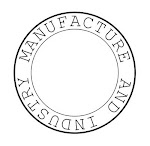When we visit Abbeyhorn, they have just taken delivery of horns from Germany and Nigeria. “Some of them are 25 inches and upwards - quite huge, right down to shorter ones which are used for whistles and knife handles, amongst other things,” Graham (pictured above), our guide and expert craftsman tells us.
“There’s no endangered species - its all from domestic use - waste from beef and so forth,” Graham hastened to add, before picking up a stumpy bit of horn in the stock room at Abbeyhorn’s factory in Holme, Cumbria. “Deer antler - this is all shed; they shed it and the gamekeeper in Scotland picks it up. This’ll make a knife handle.”

Graham has worked at Abbeyhorn since 1974, aside from a year away in another job a few years ago, from which he swiftly returned, “I didn’t like what I was doing whilst I was away and this is an easier life!” he jokes.
The factory, set in a rural idyll south of Kendal in Cumbria, is a fascinating place. Each room in the stone building is covered in the dust and dirt from the production of Abbeyhorn’s products, “Its a dirty job, you get mucky and dusty. But its enjoyable, you’re making stuff,” says Graham.
As we go round the factory Graham makes us two spoons to illustrate the different methods employed in turning horn into useful products. Different horns have different uses, depending on their form and colouration. Our horn is halved, heated, flattened, cut, buffed, fried, moulded, cooled and polished on its way to becoming spoons. It’s probably the most basic yet mesmerising production I’ve seen since starting to visit factories.

(Spoons, pre-frying and moulding)
Abbeyhorn’s products are sold throughout the world, with many of them ending up with the stamp of luxury brands engraved onto them. Purdey, Asprey, Harrods and Hermès all sell products produced by Abbeyhorn. As Graham puts it, “It’s surprising, for a little company, some household names turn up!”
The company also sells a great deal to reenactors and sells its wares at fairs around the world.
“We dress up, sell stuff off the stall. It’s quite good. I did one in Germany recently,” Graham tells me. “When I first started, most of the stuff was export - sent out to the States. There was no reenactment stuff back then. Reenactment has taken over a lot from export. We sell more to Japan than the US. Japan and Germany are our main export markets, shoehorns and stuff.”
The company also sells a great deal to reenactors and sells its wares at fairs around the world.
“We dress up, sell stuff off the stall. It’s quite good. I did one in Germany recently,” Graham tells me. “When I first started, most of the stuff was export - sent out to the States. There was no reenactment stuff back then. Reenactment has taken over a lot from export. We sell more to Japan than the US. Japan and Germany are our main export markets, shoehorns and stuff.”
-
Part two of Factory Visit No.6: Abbeyhorn to follow soon.
For all the photos of the visit please see the M&I Facebook page.

